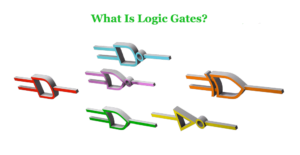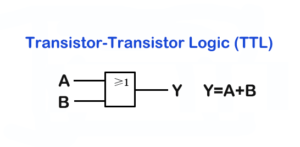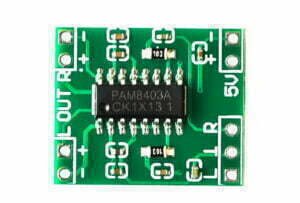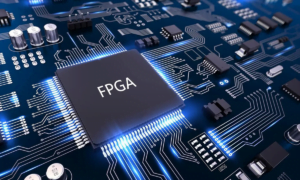Imagine building a city’s subway system blindfolded. That’s what designing a modern printed circuit board (PCB) often feels like—threading microscopic pathways for electricity while juggling heat, signal interference, and space constraints. Now, artificial intelligence is lifting that blindfold. As DeepSeek’s AI solutions penetrate the PCB industry, they’re not just tweaking spreadsheets or automating simple tasks—they’re fundamentally reshaping how we design, produce, and deploy the nervous systems of modern electronics. For an industry projected to hit $89 billion by 2028, this isn’t just an upgrade; it’s a revolution.
AI Supercharges PCB Design & Production
When Machines Outsmart Engineers
DeepSeek’s AI acts like a veteran designer on steroids. By analyzing decades of design archives, it automatically optimizes circuit routing, layer stacking, and signal paths—tasks that once took engineers weeks. Take high-density interconnect (HDI) boards: these intricate labyrinths, packed with 20+ layers and microvias, now see design cycles slashed by 30% as AI predicts electromagnetic interference hotspots and thermal bottlenecks.
Real-world punch: A Shennan Circuits engineer shared, “Our AI tools spotted a voltage drop issue in a 5G Base Station PCB that three senior designers missed. It was like having Sherlock Holmes in our CAD software.”
The Rise of Self-Healing Factories
Gone are the days of squinting at PCBs under microscopes. DeepSeek-powered vision systems now scan boards at 200 frames per second, catching defects like 0.1mm solder gaps with 99.98% accuracy—outperforming even the most eagle-eyed QC veteran. But AI isn’t just watching; it’s anticipating. By monitoring real-time data from etching baths and plating tanks, these systems adjust chemical concentrations mid-process, cutting scrap rates by up to 15%.
Numbers talk: At WUS Printed Circuit, AI-driven process optimization boosted yields from 88% to 93% in six months, saving $2.8 million annually.
Machines That Cry for Help (Before Breaking)
Predictive maintenance is where DeepSeek gets eerie. By analyzing vibration patterns from drilling machines or temperature curves in lamination presses, AI can warn technicians about bearing failures three days in advance. One Shanghai factory using this tech reduced unplanned downtime by 40%—equivalent to adding an extra production line without the capital cost.
Demand Shifts: From Commodity Boards to Brain-Like Circuits
The AI Hunger Games
Here’s the irony: While DeepSeek’s efficient algorithms reduce compute needs for end-users, they’re creating a PCB gold rush. Every AI server requires 10-15 high-end PCBs—multi-layer monsters with exotic materials like Megtron 6. These boards, costing up to 5,000/sq.m(vs.5,000/sq.m(vs.300 for standard FR-4), are driving a $12 billion niche market.
Star project alert: The rumored “Stargate” AI supercomputer could need 500,000 specialized server boards—enough to keep three PCB mega-factories humming for years.
Robots Want Better Bodies
As DeepSeek enables smarter robots and IoT devices, PCBs are morphing into Swiss Army knives. Flexible circuits now twist inside robotic joints at Tesla’s Optimus, while hybrid rigid-flex boards enable foldable AR glasses. At XMC, engineers showed me a PCB thinner than human hair that powers smart contact lenses—a market poised to hit 50 million units by 2030.
The Material Revolution
Advanced packaging is blurring lines between PCBs and semiconductor tech. TSMC’s CoWoS packaging (used in NVIDIA’s AI chips) essentially embeds ultra-fine PCBs within silicon. To keep up, Chinese suppliers like Kinwong are racing to master 20μm line/space tech—a precision once exclusive to Japanese giants like Ibiden.
Global Chessboard: Supply Chains in Flux
The Great PCB Migration
Geopolitics is redrawing manufacturing maps. While the U.S. pushes for local AI infrastructure (like Stargate), its PCB capacity barely covers 5% of global demand. Clever workarounds emerge: China’s Topsearch PCB ships high-end boards to Mexico for “final assembly,” neatly sidestepping tariffs. Meanwhile, Taiwan’s Unimicron builds mega-plants in Thailand, betting on ASEAN’s neutral trade status.
The Tech Cold War’s New Frontline
Export controls now target PCB tech like achloric dry films used in IC substrates. Response? Chinese firms are vertically integrating—Shennan Circuits now makes 70% of its high-speed substrates in-house, from copper-clad laminates to final testing.
Smart Supply Chains or Starve
AI isn’t just for factories—it’s rebuilding supply chains. DeepSeek’s demand forecasting slashed inventory costs at Hongxin Electronics by 22% by predicting copper foil price swings. Their smart scheduler, nicknamed “The Conductor,” juggles 500+ orders daily, prioritizing rush jobs for Apple while keeping small-batch IoT clients happy.
Bumps on the AI Highway
The SME Squeeze
While industry giants pour over $20 million into AI systems, smaller players face a harsh reality. Retrofitting a 1990s-era plating line with IoT sensors can cost $150,000–equivalent to half of a small or medium-sized enterprise’s (SME) annual profit. For many, this upfront investment is simply unaffordable.
Jobquake in Shenzhen
At a Guangdong factory, AI cut QC staff from 120 to 30. But there’s hope: One former inspector now manages six vision systems, her salary doubled after AI upskilling. The challenge? Scaling such transitions across 2 million PCB workers.
Data’s Double-Edged Sword
When a Taiwanese PCB maker’s AI leaked production data to rivals, it lost $30M in contracts. Now, firms are building “data fortresses”—on-site AI training with blockchain audits.
Conclusion
The PCB industry stands at a historic crossroads. For early adopters, DeepSeek’s AI is a golden ticket: Shennan Circuits now prototypes AI server boards in 11 days (vs. 45 days in 2020), while Kinwong’s predictive maintenance saves $8M yearly. But laggards risk becoming assembly-line dinosaurs.
The roadmap is clear:
Short-term: Use AI to climb the value chain—those 24-layer boards won’t design themselves.
Long-game: Partner with chip giants on 3D packaging—it’s where PCBs and semiconductors fuse into “super boards.”
Survival kit: Balance automation with workforce reinvention; treat data like gold; and always keep a foot in neutral territories like Vietnam.
As one industry veteran told me: “PCB used to mean ‘Pretty Boring Career.’ Now, with AI, it’s ‘Pathway to Billion-dollar Creations.’” The question isn’t whether to adopt AI, but how fast you can rewire your business before competitors do it first.





